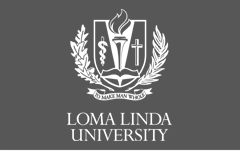Abstract
INTRODUCTION AND OBJECTIVES:
- Myxoidliposarcoma (MLS) has a propensity to metastasize to osseous sites.
- Reports in the literature suggest that FDG-PET, CT, and bone scan are insensitive and that MRI is the preferred modality for detecting metastatic disease in the bone marrow.
- Whole body MRI (WBMRI) is relatively time consuming to perform when multiple sequences are used with standard equipment.
- We present our initial experience utilizing WBMRI to evaluate for metastatic MLS and propose whole body STIR sequences as a methodology for screening for metastatic disease.
METHODS: A retrospective review of all patients with MLS who underwent whole body 1.5T or 3T MRI examinations between 2012 and 2018.
WBMRI included T1, T2, STIR, T1 fat suppressed, and T1 fat suppressed with contrast.
After initial staging, patients were followed with WBMRI with STIR imaging only. Large-field coronal views of the long bones, ribs, chest, scapulae, pelvis with sagittal view of the spine.
All patients underwent additional imaging with a CT chest, abdomen, and pelvis, whole body PET-CT and whole body bone scan.
Identified lesions were further evaluated with dedicated MRI of the site
The number and locations of the sites found by imaging as well as the round cell component of the sites sampled were evaluated.
Metastases were confirmed by pathology or progression on subsequent MRIs.
RESULTS: We found a total of 68 osseous only lesions, including 8 osseous lesions extending into the surrounding soft tissues by MRI.
None of the osseous only lesions were detected by FDG-PET or CT.
FDG-PET and CT were able to identify only some of the osseous lesions that extended outside of the bone.
No pulmonary metastases were found.
STIR and T1 fat suppressed contrast enhanced images were found to provide the best contrast of the metastases compared to the normal bone marrow.
Of the tumors resected in the patients with metastatic disease, 3 of the primary tumors had a round cell component of 0%, 1 of 2-5%, 1 of 5-10% and 1 of 20%. Ten of the metastatic lesions resected did not have any round cell component.
Average imaging time for WBMRI was 250 minutes of scan time vs. 41 minutes for STIR WBMRI (83.6% reduction in total time).
STIR WBMRI was tolerated by all patients in one session. No patient was able to tolerate standard WBMRI in one session.
CONCLUSIONS: Metastatic MLS is most reliably detected on WBMRI.
We found that imaging the whole body with standard WBMRI to be a resource and time consuming endeavor.
Metastatic MLS is best visualized on STIR and T1 contrast images.
Utilizing STIR only WBMRI has markedly decreased imaging time by 83.6%, which is better tolerated by our patients and decreases the utilization time of the MRI.
The use of STIR imaging is preferred as this avoids complications that may occur with administering contrast.
Despite a low round cell component, metastatic lesions were identified in our patients. Due to this, we advocate that all patients diagnosed with MLS obtain a WBMRI with STIR sequences for both staging and screening, regardless of round cell component.
Recommended Citation
Chien, Alexander
(2019)
"Short Tau Inversion Recovery Magnetic Resonance Imaging for Staging and Screening In Myxoid Liposarcoma,"
Loma Linda University Student Journal: Vol. 3:
Iss.
2, Article 19.
Available at:
https://scholarsrepository.llu.edu/llu-student-journal/vol3/iss2/19

